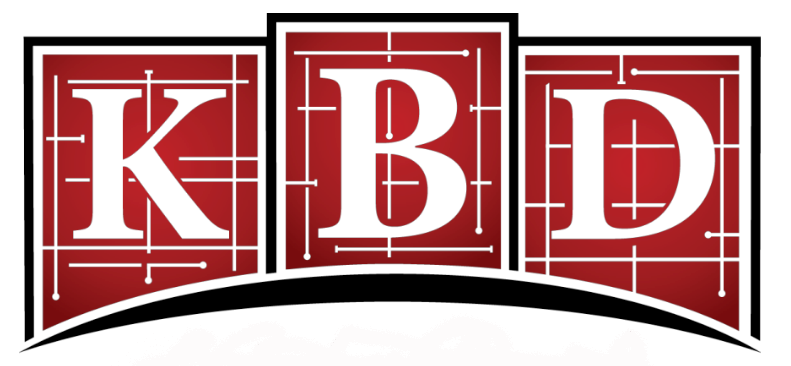Blog
High-Contrast Kitchen Remodels: Dark Cabinets + Light Countertops Done Right
This is a subtitle for your new post

High-contrast kitchens are having a moment—and for good reason. Pairing dark cabinetry with light, luminous countertops creates a crisp, modern look that still feels warm and livable. When done thoughtfully, the contrast emphasizes clean lines, showcases beautiful materials, and photographs like a dream (hello, listing photos and Instagram). If you’re considering “dark + light” for your next remodel, here’s how to get it right from concept to final wipe-down.
Pick Your Dark Tone (and Its Undertone)
“Dark” doesn’t have to mean jet black. Charcoal, graphite, espresso, navy, and deep forest green all read dark—and each carries undertones (blue, brown, green) that influence the rest of your palette.
- Black or charcoal skews sleek and modern; it pairs beautifully with cool whites and subtle gray veining.
- Navy blends effortlessly with brushed brass and warm whites for a classic, tailored feel.
- Espresso or walnut stain keeps the look grounded and organic, especially with creamy countertops.
Before you lock in a cabinet color, test sample doors under your real lighting. The same shade can flip from cool to warm depending on daylight and bulbs.
Choose Countertops That Brighten, Not Blind
Your light countertop is the “bounce card” for the room—it should reflect light and soften the cabinetry’s depth. Quartz and porcelain slabs are popular for durability and consistent patterning, but marble and light granite can be stunning if you’re comfortable with natural stone’s character.
- For bold dark cabinets, a soft white with subtle veining keeps things calm and upscale.
- If you crave drama, go for pronounced veining that echoes your cabinet undertone (cool gray for charcoal, warm taupe for espresso).
- Avoid an overly stark, bluish white if the room already reads cool; a slightly warm white often feels more inviting.
Edge profiles matter: a clean eased edge looks contemporary; a mitered edge creates a thick, furniture-like statement on islands.
Balance With Backsplash, Flooring, and Walls
High contrast shines when the supporting players stay harmonious.
- Backsplash: Subway tile in satin or matte, stacked or offset, is timeless. Want more personality? Choose a zellige or handmade-look tile for gentle texture that won’t fight the slab veining. If you prefer slab-to-backsplash, carrying your countertop up the wall streamlines the look and minimizes grout.
- Flooring: Mid-tone woods are your friend—oak, hickory, or maple with a matte finish bridges the dark/light gap. If you go tile, keep pattern subtle and pick a grout that won’t shout.
- Wall color: Soft, warm whites (think a hint of cream or linen) cozy up the contrast and help the room feel cohesive.
Get the Lighting Right (It’s Non-Negotiable)
Dark cabinets absorb light. Plan layers:
- Ambient (recessed or flush-mount),
- Task (under-cabinet, pendants over the island), and
- Accent (inside glass uppers or toe-kick LEDs).
Choose a consistent color temperature (typically 2700K–3000K for residential warmth). Under-cabinet lighting is a must—it brightens work zones and makes your countertops gleam.
Hardware, Metals, and Fixtures
Metals are the jewelry. Brushed brass warms navy and black; matte black hardware disappears against black cabinetry but pops on white counters; polished nickel reads classic with charcoal and white. Keep metal finishes to one dominant + one supporting for a curated, not chaotic, look. Large pulls (6–10") lend a tailored, furniture-grade feel to tall doors and deep drawers.
Texture: The Secret Ingredient
Contrast isn’t just about color—it’s also about texture. Consider:
- Matte cabinet finishes to reduce fingerprints and smooth reflections.
- Honest wood accents (open shelves, a white oak island, or floating hood wrap) to warm high contrast and add tactile depth.
- Textured tile to catch light and create movement without busy pattern.
Layout Tips That Make Contrast Work Harder
- Use dark lowers + light uppers to keep sightlines open, or flip the script with a dark island and light perimeter to anchor the room.
- Break up long runs of dark with glass fronts, open niches, or appliance garages.
- Integrate panel-ready appliances for an uninterrupted cabinet face that feels custom and calm.
Maintenance and Real-Life Practicalities
- Select durable, wipeable finishes (conversion varnish or high-quality two-part finishes) on cabinets—dark doors highlight dust and smudges more than light.
- For countertops, quartz and porcelain resist staining and etching better than marble; keep a gentle daily cleaner handy.
- Choose fingerprint-resistant pulls and consider a soft-sheen faucet to minimize water-spot drama.
Common Mistakes to Avoid
- Too many patterns: Let one surface lead (usually the countertop) and keep others quiet.
- Inconsistent whites: Match your “whites” across paint, counters, and tile so undertones don’t clash.
- Neglecting lighting: Under-cabinet and island pendants aren’t extras—they’re essential.
Ready to Design Your Own High-Contrast Kitchen?
At Kitchens By Design, we help clients nail the “dark + light” formula every day—selecting the right cabinet species and finish, pairing them with countertop slabs that sing, and tuning the lighting so your kitchen looks incredible at 7 a.m. and 7 p.m. Visit our showrooms in Cedar Rapids, Iowa City, Davenport, and North Liberty to see finishes in person, or explore inspiration and schedule a consultation at kbyd.com. Bring your favorite cabinet color and we’ll match the perfect light countertop—done right.

